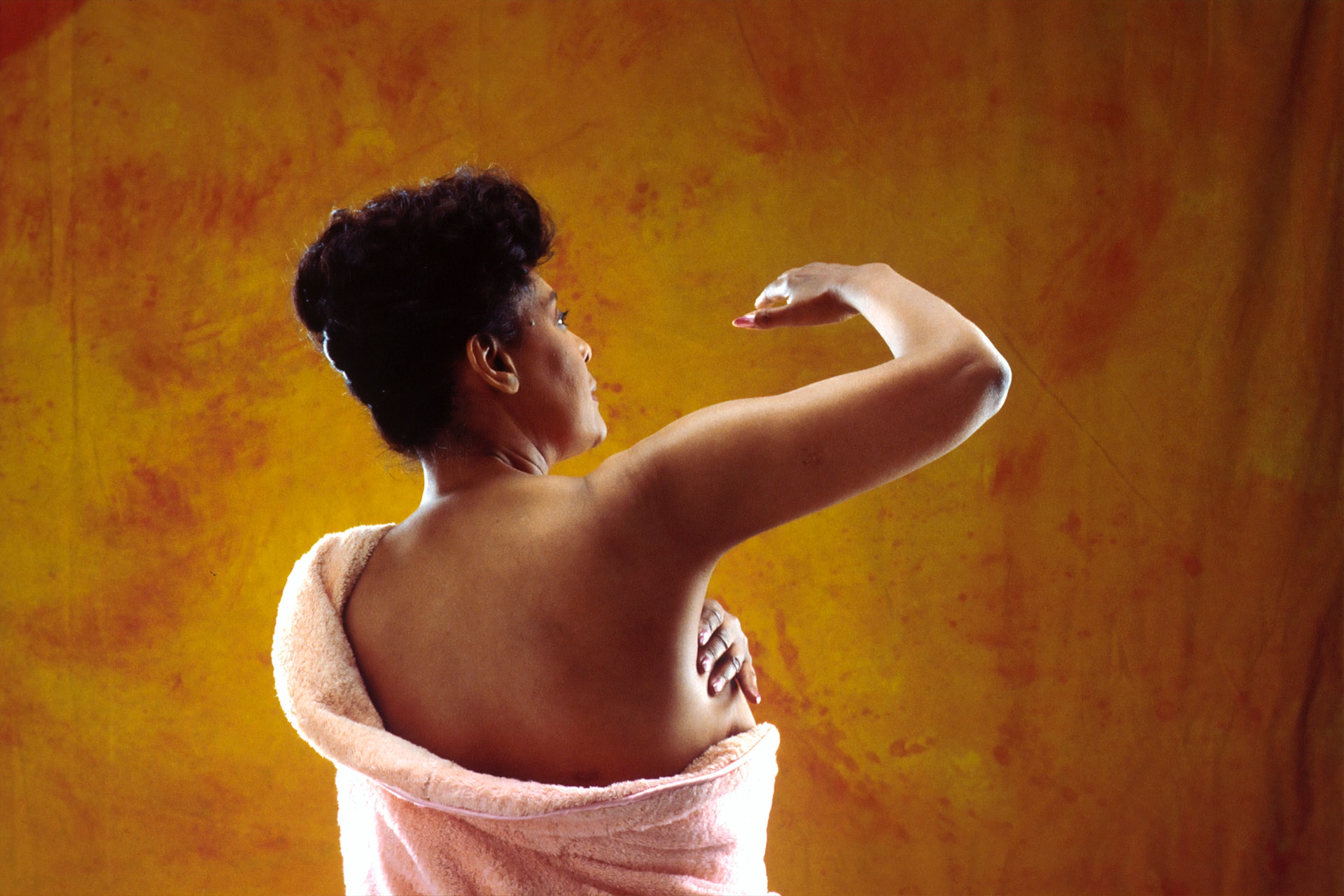
There are many different kinds of breast prostheses. They range from shapers or partials that help to balance size differences in the breasts, to the breast form, a prosthesis that replaces the entire breast and is worn against the body or inside a specially-designed bra.
After surgery on the breast, you will wear a temporary, lighter form until your recovery is complete. About 6-8 weeks after surgery, you should switch to a permanent silicone prosthesis. These silicone prostheses closely imitate the weight, shape and feel of a natural breast. They will also conform to your body temperature.
There are various sizes and styles of breast prostheses available. There are even prostheses designed for sports and swimming! A professional fitting is important to make sure it’s not only comfortable and natural, but matches the remaining breast in the case of a single mastectomy (removal of the breast).
A breast prosthesis helps to
- maintain your body’s weight balance for better posture
- prevent shoulder drop on the side of the surgery
- prevent lower back pain, neck pain, swelling and spinal curvature
- restore self confidence
Prostheses vs implants or reconstruction
A prosthesis is a valid alternative to reconstruction for many reasons:
- you don’t want to go through repeated surgeries (implants have to be replaced after a period of time)
- you don’t have the time or money for reconstructive surgery
- you are not a good candidate for reconstruction, or previous reconstruction hasn’t worked
- you don’t want an invasive solution
- you just don’t want to go through reconstruction yet
Some women prefer reconstruction because it’s more convenient, and they don’t have to remember to wear a prosthesis daily. In the end, having a prosthesis, reconstructive surgery or nothing at all is your choice. However, do note that not replacing the weight of the missing breast can lead to spinal curvature, worsening posture, swelling and pain.
Keeping it clean
Your skin oils can damage the protective outer layers of your breast prosthesis. Therefore, it is important to clean your prosthesis when you bathe or shower. Use warm water and a mild soap, or a cleanser that is specially formulated for prostheses. After washing, pat it dry without rubbing. If you have a contact breast prosthesis that sticks to your skin, let it air dry instead. Patting it dry with a towel can make the adhesive less effective. If you go swimming, always rinse your prosthesis in clean, cool water when you are done. This removes any salt, chlorine or sediment that may adhere to your prosthesis.
Storing and replacing your prosthesis
When you’re not using your prosthesis, store it in the box it came from to prevent accidental damage. Clean and dry your prosthesis before storage.
A good prosthesis should last you 2 to 5 years, but you may need a new one if you lose or gain weight. It is recommended to go for a refitting every two years to ensure both your prosthesis and your bra still fit you correctly.
What to avoid
If your prosthesis’ outer film is punctured or damaged, it can affect its shape and how long it lasts. When you’re wearing your prosthesis, be careful to keep it away from:
- jewellery or rings
- pet’s claws
- long nails
When you’re washing the prosthesis, never use strong detergent, bleach or dye. Do not dry it under direct heat or sunlight.
Finally, perfumes and lotions can react with your breast prosthesis, or damage any adhesive it may use. This can affect its fit and longevity. Don’t use these products on your chest or under your arms to prevent accidental contact with your prosthesis.
Where to find more information
You can get support related to breast prostheses and breast cancer from your local or regional cancer support groups, including:
- The Breast Cancer Welfare Association (BCWA)
- The National Cancer Society of Malaysia
- Penyayang Pesakit Kanser
- Local social enterprise Amanita
- Can-Care
- Kinabalu Pink Ribbon
References
American Breast Care (2019) Ask Eileen [Accessed: 19 October 2020] Available at: https://americanbreastcare.com/ask-eileen/
American Breast Care (2019) Breast Prosthesis Guide [Accessed: 19 October 2020] Available at: https://americanbreastcare.com/prosthesis-guide/
Amoena (2020) What Is A Mastectomy Form? [Accessed: 19 October 2020] Available at: https://www.amoena.com/global/about-us/breast-form-basics
Breast Cancer Foundation (2020) Support [Accessed: 19 October 2020] Available at: https://www.breastcancerfoundation.org.my/support
Breast Cancer Welfare Association (2020) Non-Medical Aids [Accessed: 19 October 2020] Available at: https://www.breastcancer.org.my/support-programme/non-medical-aids/
Breast Cancer Welfare Association (2020) Treatment [Accessed: 19 October 2020] Available at: https://www.breastcancerfoundation.org.my/treatment
Can-Care (2020) Breast Prosthesis [Accessed: 19 October 2020] Available at: https://cancare.asia/pages/breast-prosthesis
Can-Care (2020) Cleaning & Storing of Breast Prosthesis [Accessed: 19 October 2020] Available at: https://cancare.asia/pages/breast-product-care
Can-Care (2020) Frequently Asked Questions [Accessed: 19 October 2020] Available at: https://cancare.asia/pages/frequently-ask-question
ContourMed (2016) How to Care for Your Custom Breast Form [Accessed: 19 October 2020] Available at: https://contourmed.com/how-to-care-for-your-custom-breast-form
Mastectomy Shop (2018) How to Clean and Care for Your Breast Forms [Accessed: 19 October 2020] Available at: https://www.mastectomyshop.com/blogs/how-to-clean-and-care-for-your-breast-forms/
Medisiamedic (2017) The Importance of Wearing A Breast Prosthesis [Accessed: 19 October 2020] Available at: https://medisiamedic.com/importance-wearing-breast-prosthesis/
National Cancer Society Malaysia (2018) Wigs and prosthesis [Accessed: 19 October 2020] Available at: https://cancer.org.my/get-help/resource-wellness-centre/wigs-and-prosthesis/
Olivia M. (2018) Importance of breast prostheses [Accessed: 19 October 2020] Available at: https://www.nst.com.my/lifestyle/heal/2018/10/425155/importance-breast-prostheses